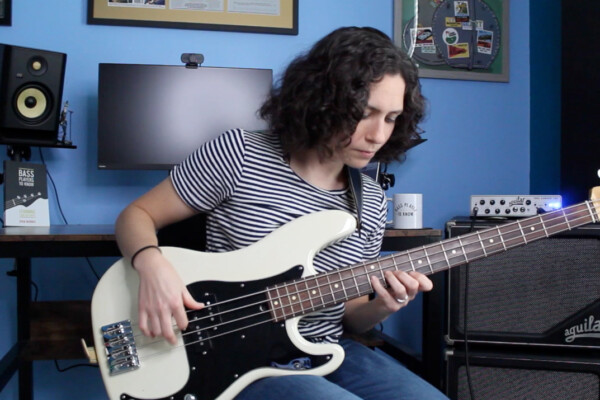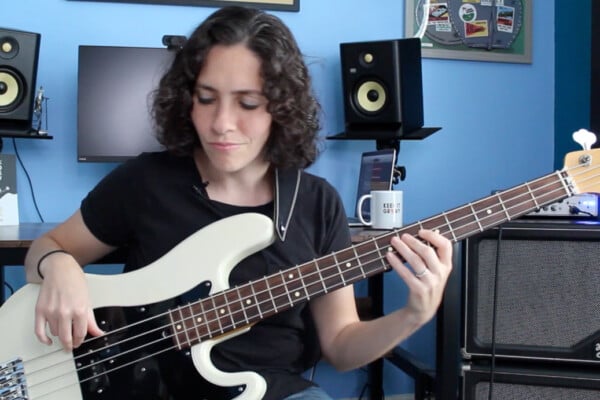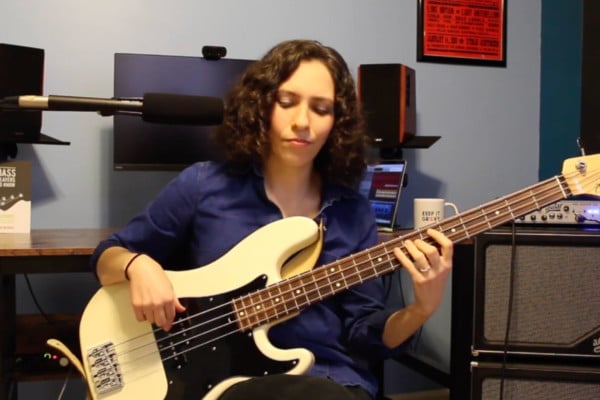The Lightbulb Moment: Playing Inside The Box

There’s something extremely satisfying about playing by the rules. You have a goal in mind, you learn the right way to go about something, and you study how other people have successfully achieved that goal. You combine the necessary ingredients, execute with precision and awareness, and do a damn fine job. It’s a nice feeling.
In musical terms, this often means that you learn the essential building blocks of how to play a song or scale. You go by the book, playing the correct notes at the appropriate time. Everything is groovy — you know it, the person listening knows it, and the other people on the bandstand know it.
It takes quite a lot of willpower and attention to do this well, especially when there’s a little birdie on your shoulder whispering sweet nothings into your ear. The birdie says “play more, show off your skills! Go for it! Common, stretch a little! Try that thing you learned!”
While there’s a time and place to listen to those words of encouragement, it’s always a good idea to exercise good musical judgment. If you’re jamming with folks, then, by all means, take a few chances! If you’re at a wedding and playing “My Girl,” then you’d better just play the part. That’s what people expect and you’ll get to do your best Jamerson impression.
Playing inside the box also means that if you’re new to improvising or adding your own flair, “the box” is a great place to start. Learning how to play over the harmonic context of a song can be tricky business, especially if you’re used to sticking to the record, but being able to improvise your own fills is an exciting and necessary step for musical growth. So, as the good ol’ saying goes, learn how to walk before you can run. Or, master the art “playing inside” before attempting to go out.
This literal “box” that many guitarists and bassists refer to is a span of three frets (3rd-5th, 7th-9th) that allows you to keep your hand in one position as you move across the strings. It can be used in either a major or minor musical setting and magically includes most of the notes in the respective pentatonic scales.
In the key of G Major, the box figure begins on the 2nd scale degree (A) and easily outlines the notes of the major pentatonic scale. Begin with your index finger on the 5th fret of your E string and your pinky or third finger on the 7th fret. Move ascending across the strings, adhering to the 5th and 7th frets, and that will create the “box” shape. In doing so, you will play scale degrees 2, 3, 5, 6, 1 (octave), 2, 4, 5 (corresponding notes: A, B, D, E, G, A, C, D). If you stick purely to the notes in the pentatonic scale, simply skip the “C” on the 5th fret of the G string (scale degree 4). The notes in this pattern are pretty much fair game when it comes to playing a fill or improvising in G major.
In the key of A minor, the box outlines most of the notes of the minor pentatonic scale, beginning with your index finger on the 5th fret of your E string and your pinky on the 7th fret. (If you’re experimenting with this in real time, please note that while the position is the same as the previous example, the scale and musical context is in relation to a different key). Moving across the strings, you’ll play scale degrees 1, 2, 4, 5, b7, 1 (octave), b3, 4 (corresponding notes: A, B, D, E, G, A, C, D). Omit the second note, the “B” on your E string (scale degree 2), to adhere to the minor pentatonic scale. If you’re playing a blues or funk tune, try coming up with fills, solos, or variations of the bass line by experimenting with these notes. Chances are, if you’re listening to a record and the bass player is playing some super funky fills, they’re likely pulling from this set of notes.
When you begin working with these patterns, I recommend playing along to a simple song or groove with a corresponding pentatonic scale. Pick a blues progression, a song that stays on one chord, or perhaps a groove that utilizes two chords (such as A7 and D7). Make sure you have the foundational bass line under your fingertips and then listen for a space to add your fill. This space usually lives towards the end of the groove pattern. By placing your fill at the end of the measure, you’re preparing for the next downbeat and taking advantage of space that won’t interfere with the initial groove structure. Play through the chord progression on repeat and challenge yourself to discover a new fill every 2nd or 4th go’round.
Once you feel comfortable playing with the notes in the box, give yourself permission to step outside of it. Integrate notes that expand upon the pentatonic scale; if you’re playing in a minor key, try integrating the #4th to bring in a “bluesier” vibe or the 6th if you feel like pulling from the Dorian mode (this works best over a progression like Am7 – D7). In a major key, try integrating chromatic passing tones to play 2-#2-3 or 5-#5-6.
Despite how many people are constantly trying to “play outside the box,” there’s value in sticking to the basics and playing in a consonant manner. There’s a time and place to step away from that, but give yourself permission to keep things simple. Once you feel like you’re ready to explore other harmonic possibilities, then have at it. Go for a run, explore a new neighborhood, and take the scenic route. Just make sure that the weather is good before you step outside.
Ryan Madora is a professional bass player, author, and educator living in Nashville, TN. In addition to touring and session work, she teaches private lessons and masterclasses to students of all levels. Visit her website to learn more!




Great lesson Ryan. Something that I need to incorporate in my playing.